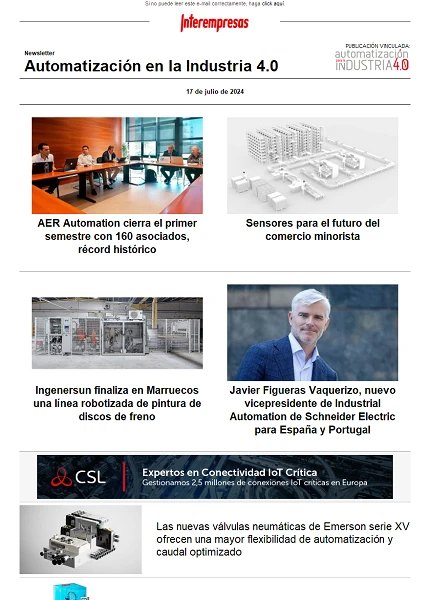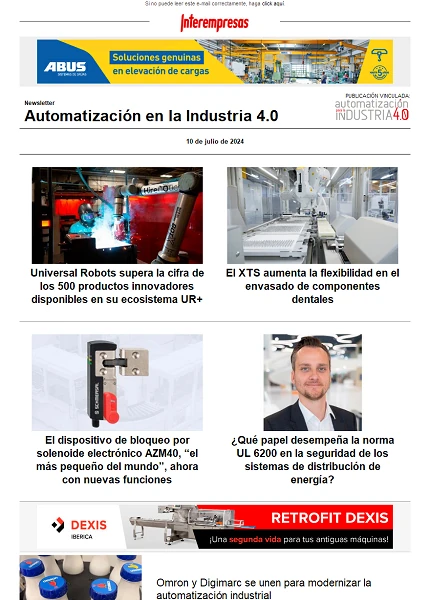This news article was originally written in Spanish. It has been automatically translated for your convenience. Reasonable efforts have been made to provide an accurate translation, however, no automated translation is perfect nor is it intended to replace a human translator. The original article in Spanish can be viewed at
Consideraciones a la Integración de GT y Kanban en la Fabricación ÁgilControl and planning
Considerations to the integration of GT and Kanban in the agile manufacturing
R. Sunday Navas (1), C. González Gaya (2).
(1) University of La Rioja. Dept. of mechanical engineeringC / Luis Ulloa 20 (departmental Edition). 26004 Logroño (La Rioja).
941 299 276, rosario.domingo@dim.unirioja.es
(2) UNED. Dept. of engineering construction and manufacturing. Paragraph 60149. 28080 Madrid.
01/12/2002 1. Introduction
Since that in 1991, the Iacocca Institute of the Lehigh University coined the term "Agile manufacturing" have arisen various approaches to the same; in the approach of this article assumes the following: the agile manufacturing assimilates the entire range of flexible, TQM, JIT manufacturing manufacturing technologies and manufacturing "lean" [1]; It is low but everything related to the TQM. Its first objective is the reduction of the time of supply in all areas of manufacturing and therefore also the time of preparation. A characteristic element of the flexible manufacture is the technology of groups (GT - Group Technology) and their known contribution to the reduction of the time of preparation. As for JIT manufacture and "lean", the first part of the second as the central axis of the two is the drive system kanban that facilitates a constant flow of materials [2] and contributes to the overall decrease in the time of supply.
In addition as attributes of the agile manufacturing are identified responsiveness, speed, flexibility and competition to unpredictable changes and unprecedented [3]; While the GT allows to respond to this demand, the kanban system is designed for a situation of stable demand. Both concepts have been analyzed together, but not under the prism of the agile manufacturing; (en_consecuencia,_los_objetivos_de_este_artículo,_son:_i) review the various methods of the GT and the restrictions which have to use the kanban system and ii) to develop an operational framework to facilitate the achievement of the attributes of agility.
2 Results and discussion
While in a generic way, with the GT manufacturing is possible for wider range of pieces with minor changes in tools, transport between machines and changes of location and orientation of parts, quantitative cell manufacturing methods offer greater possibilities of integration with the kanban with coding and classification systems. According to Chan, Lam and Lee [4], at the level of programming of a manufacturing cell, the approach is based on the work in progress, the processing time and setup time. All this has an impact on the size of the lot, in the safety stock and therefore the number of kanban in circulation.
3 Findings
The need to manufacture products varied rapidly make the GT and the kanban system important elements within the environment of agile manufacturing; both methods have been analyzed and particularly restrictions to integrate both, as well as ways to overcome them.
4. References
[1] Y.Y. Yusuf, M. Sarhadi, a. Gunasekaran, Agile manufacturing: The drivers, concepts and attributes. International Journal of Production Economics, 62, (1999) p. 33.
[2] H. Soriano-Meier, P.L. Forrester. A model for evaluating the degree of leanness of manufacturing firms, Integrated Manufacturing Systems, 13 (3), (2002) p. 104.
[3] H. metadata, g. Colquhoun, i. Barclay, z. Dam, Agile manufacturing: management and operational framework. Proc. Instn. Mech. Engrs. 215 (6) part (b), (2001) p. 857.
[4] C.Y. Chan, F.W. Lam and C.P. Lee, Considerations for using cellular manufacturing, Journal of Materials Processing Technology, 96 (1999) p.182.








